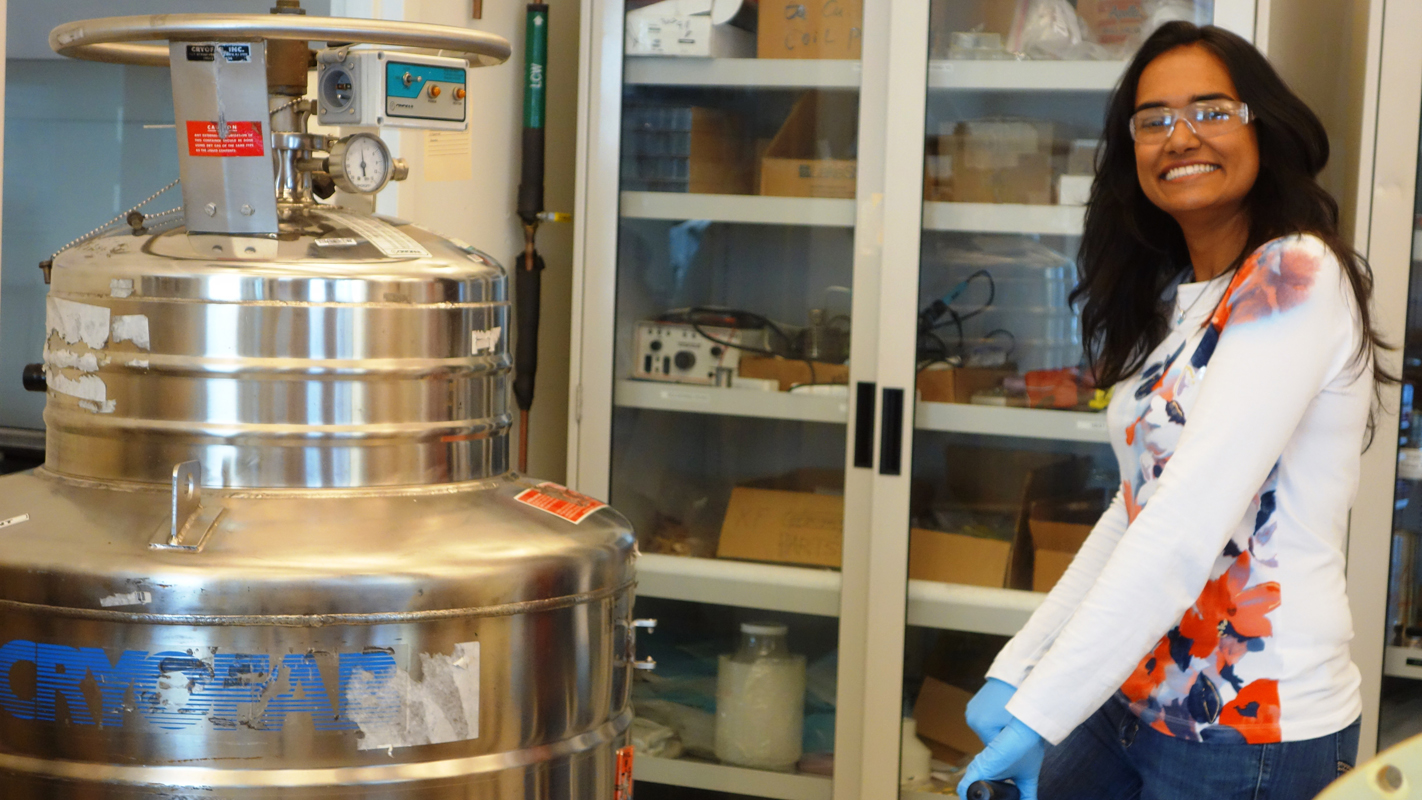This Is What Science Looks Like at NC State: Sasha Ishmael

Editor’s note: This post was written by Sasha Ishmael, a postdoctoral researcher in materials science and engineering at NC State. The post is an entry in an ongoing series that we hope will highlight the diversity of researchers in science, technology, engineering and mathematics. The series is inspired by the This Is What A Scientist Looks Like site.
My name is Sasha, and I’m quietly admitting that I am afraid of the dark…Please don’t tell anyone. One of my most dreaded early memories as a child was being without electrical power. I grew up on a small island in the Caribbean, Trinidad and Tobago. Okay, I lived on Trinidad, and it’s actually two islands forming one country, but that’s a history lesson for another time.
As you can probably imagine, the electrical power grid of a developing country was not very reliable at that time. Frequent power outages caused moments in my life when I felt unfairly taken away from the things I loved to do. Reading by candle light was no fun, and there was no internet, allowing the opportunity for watching reruns of my favorite shows. This dark time was lost time, utterly and completely lost, and I thought I would never regain the light I craved.
Skipping to a few of the brighter memories from my childhood: My mother was the earliest person I can remember, who introduced me to science. She is a former high school biology teacher who also taught physics. From an early age, while taking walks in our garden in Trinidad, she taught me about all types of plants and flowers. Soon I could identify different parts of the flowers and even describe their specific functions.

Also in my extended family, spanning several generations, the common theme was the pursuit of knowledge. My love for technology was triggered by a cousin, who introduced me to the wonders of computers and programming. The first time he showed me a game, where the computer spoke to me, I spoke back to it but waited in vain for a response. A bit too forward thinking, since at the time voice recognition and processing did not exist.
Around the age of 15 I had to make a decision on what field of study to pursue. I decided to concentrate on physics, mathematics and biology, core areas that would eventually lead me to where and who I am today. After graduating from high school I opted for a field that felt challenging and exciting to me, electrical and computer engineering. Out of the many diverse areas in this field of study, I fell in love with the theory of electromagnetics. Little did I know that this love would shine even brighter, when I was introduced to the field of superconductivity.
We all know that normally metals are very good at carrying an electrical current. Superconductors are materials that, when cooled to very low temperatures, are in fact SUPER at carrying electrical currents and can ideally do so with zero losses in energy. Applications that use superconducting devices are in the areas of medicine for internal imaging of the body (MRI), in high energy physics like particle accelerators (Large Hadron Collider) and electrical power and energy devices that can generate, use and transmit electrical power.
Wait a minute…devices made with superconducting materials can help transfer electrical power with zero losses??? The idea of lossless power transmission was, to me, like finding the Holy Grail!! If this was the case why was it not being done everywhere? I soon learned that there were a challenging set of complex issues that were preventing widespread application. Challenge accepted! If I could help bring superconducting devices like electrical generators and power transmission lines to reality, no one would ever have to miss out on doing the things they love; feeling connected to the world and keeping the light of hope shining. I became dedicated to help.
Needless to say, from that point on, I was naturally propelled into an academic career that led me to complete my Ph.D. in electrical engineering and to the research I do today.
Currently, I am a postdoctoral research scientist in the Materials Science and Engineering Department at NC State. I work on research related to superconductivity with my mentor, Justin Schwartz. I am doing research related to the integration of materials into superconducting devices to make them viable solutions for more applications. Two of the topics of my research are fiber optic sensors for monitoring the health of superconducting magnets and ceramic nano-powders that can be used as thermally conductive electrical insulation for superconducting wires. My wish is that my research and contributions will help illuminate the path that makes superconducting devices a commonplace reality.
- Categories:


